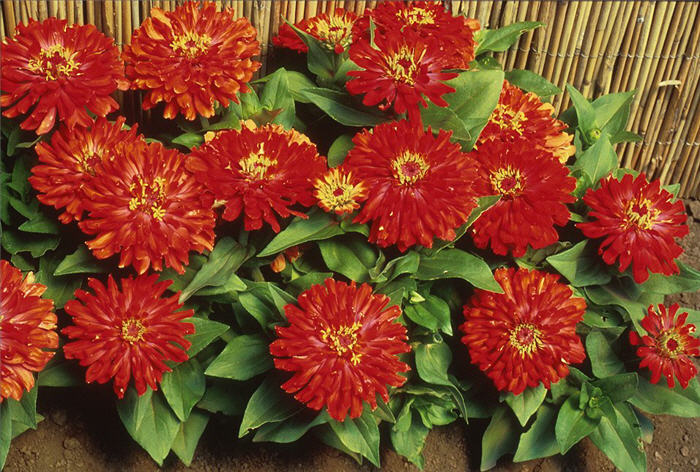| Botanical Name: Zinnia elegans | |
| Common Name: Zinnia |

-
Anatomy
-
Culture
-
Design
Plant Type
Annual
Height Range
Under 1', 1-3', 3-6'
Flower Color
Gold, Orange, Pink, Red, Yellow, White
Flower Season
Summer, Fall
Leaf Color
Green
Bark Color
n/a
Fruit Color
n/a
Fruit Season
n/a
Sun
Full
Water
Medium
Growth Rate
Fast, Moderate
Soil Type
Loam
Soil Condition
Average, Rich, Well-drained, Dry
Soil pH
Neutral
Adverse Factors
Attracts Bees
Design Styles
English Cottage, Mediterranean, Ranch, Spanish
Accenting Features
Showy Flowers
Seasonal Interest
Summer, Fall
Location Uses
Perennial Border, Patio, Raised Planter
Special Uses
Container, Cut Flowers
Attracts Wildlife
Birds, Butterflies
Information by: Stephanie Duer
Photographer: Modesto Jr. College
Photographer: Modesto Jr. College
-
Description
-
Notes
Like marigolds, there may be too many zinnia to mention in this tiny space. These annuals come in a range of sizes and a wealth of colors from the softest of salmons and apricots to traffic stopping reds and oranges. Flowers have single, double, or frilled petals; foliage is green. Attractive to bees, butterflies, and birds. An excellent cut flower.
Grow in full sun in well draining, average soil. Deadheading will prolong bloom and make for a tidier appearance. Start from seed or buy plants. Avoid overhead watering, as it can cause powdery mildew on the foliage.